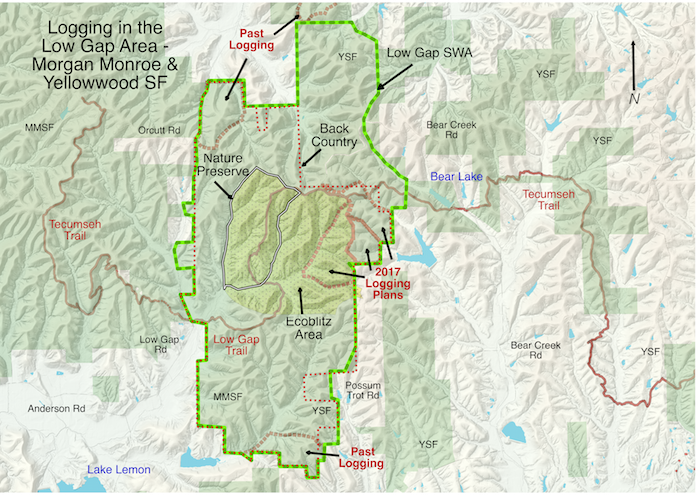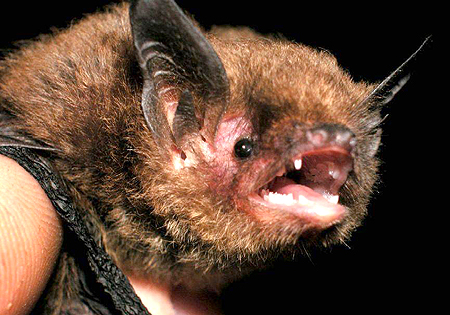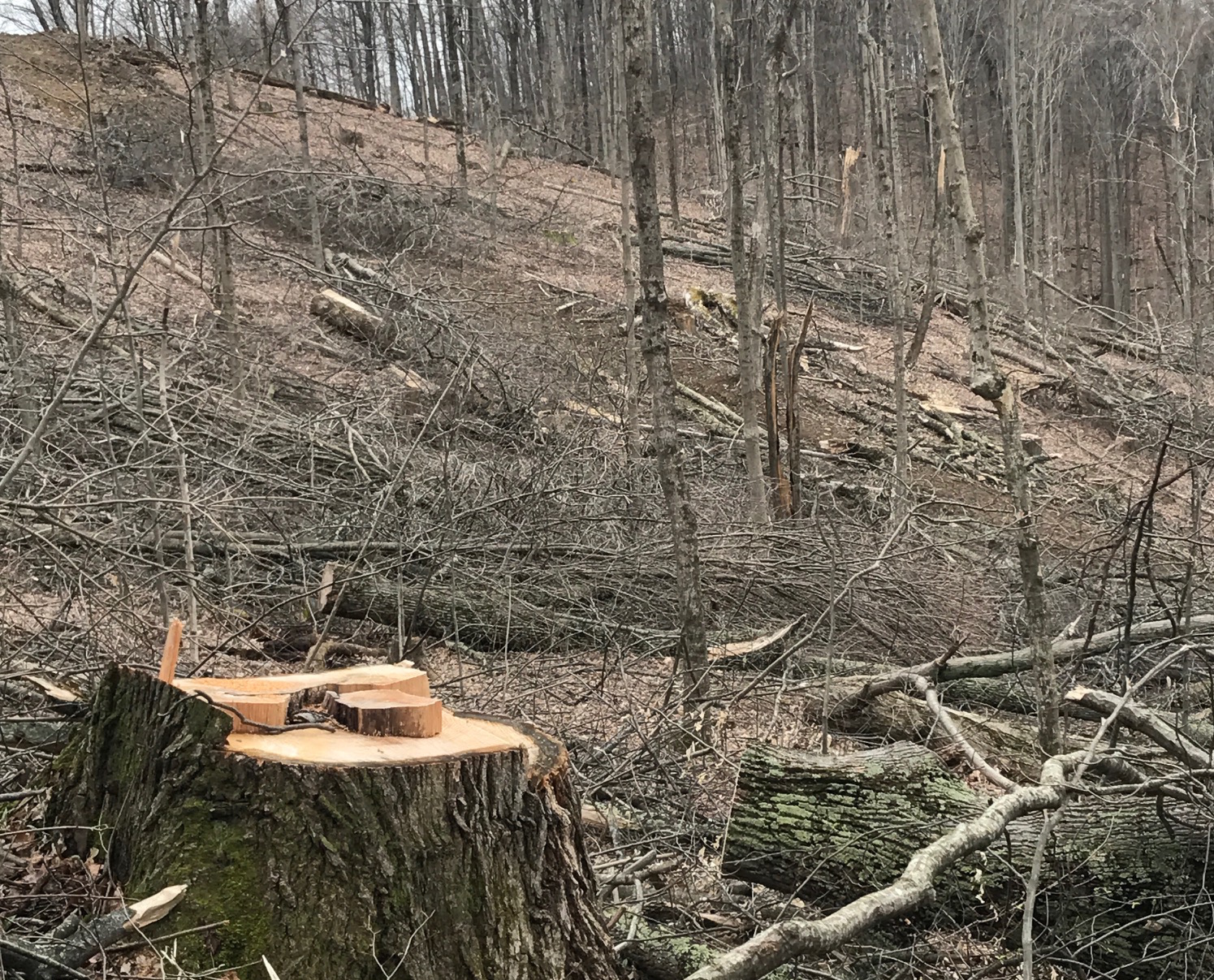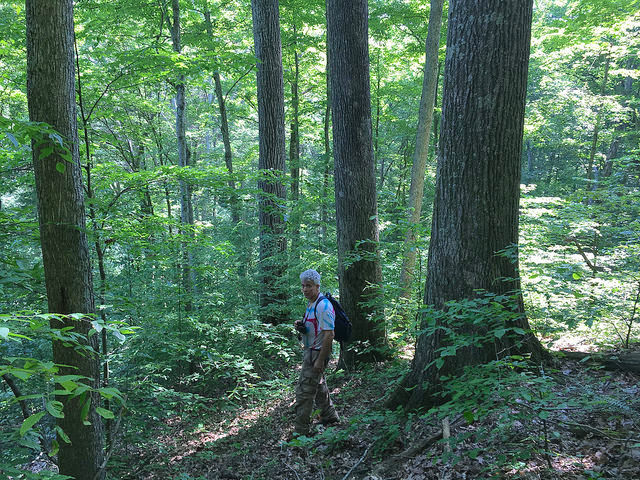by Jeff Stant, IFA Executive Director
This past week, the Indiana Division of Forestry (within the Indiana Department of Natural Resources) posted plans to log 299 acres in Yellowwood State Forest inside the Morgan-Monroe/Yellowwood Back Country Area in Brown County. The plans will log the most remote and pristine hollow which contains tulip poplars, sugar maples and northern red oaks between 150 and 200 years old. IFA conducts part of our Ecoblitz flora/fauna survey in this area, and we know it to be exceptionally diverse in terms of animal and plant life.
The Division of Forestry’s shocking plans totally ignore the fact of this forest’s high ecological quality. And once again, their logging would re-route one of Indiana’s longest and best hiking trails, the Tecumseh Trail.
 WHERE IS THE PLANNED LOGGING TO OCCUR?
WHERE IS THE PLANNED LOGGING TO OCCUR?
The 299 acres are in northwestern Brown County and comprised of three adjoining tracts on both sides of Possum Trot Trail. The tracts extend northward from the Possum Trot Road Trail Head across the Tecumseh Trail between Shipman Ridge and Bear Lake. DOF plans to sell the timber this year.
WHAT CAN WE DO?
ASK GOVERNOR HOLCOMB TO STOP THESE PLANS!
Our Governor is about to find out how many people are tired of our state forests being treated like timber farms. PLEASE make a call or write a letter to Governor Holcomb (317-232-4567). Both of these are more effective than an e-mail, but all communications are of value. Key points to stress:
1) THE STATE HAS NOT CHECKED FOR RARE/THREATENED/ENDANGERED SPECIES. An inventory of the flora and fauna on these tracts should have been done before any decision to log them was made. No such inventory has been done. The DOF staff have only examined the state’s Natural Heritage Database in 2013. The IDNR’s Division of Nature Preserves maintains this database: they explain that it is only a collection of documented identifications and should never be relied upon to decide whether rare, threatened or endangered (RTE) species or their habitats exist at any particular location. The existence of such species can only be determined by an inspection of the site by qualified individuals, a step which the DOF must take here!
 2) IFA HAS DOCUMENTED BATS HERE. IFA’s Ecoblitz has documented many RTE species in two of these tracts and submitted this information to DOF. Just this year, mammalogists netted the federal and state endangered Indiana Bat in the hollow in Tract 3 and found a maternity roost for this bat in a ravine in Tract 2. In 2016 they also found a maternity roost for the Indiana Bat within a hundred yards of Tract 3 and netted an Indiana Bat and many Eastern Red Bats which are a Species of Special Concern (officially considered rare) on Possum Trot Trail separating these three tracts. Logging should be kept out of this entire area given the rapid decline of the Indiana Bat toward extinction and the documented evidence of its dependence upon this forest to raise its young.
2) IFA HAS DOCUMENTED BATS HERE. IFA’s Ecoblitz has documented many RTE species in two of these tracts and submitted this information to DOF. Just this year, mammalogists netted the federal and state endangered Indiana Bat in the hollow in Tract 3 and found a maternity roost for this bat in a ravine in Tract 2. In 2016 they also found a maternity roost for the Indiana Bat within a hundred yards of Tract 3 and netted an Indiana Bat and many Eastern Red Bats which are a Species of Special Concern (officially considered rare) on Possum Trot Trail separating these three tracts. Logging should be kept out of this entire area given the rapid decline of the Indiana Bat toward extinction and the documented evidence of its dependence upon this forest to raise its young.
In addition to bats, in 2015 mammalogists found 5 smokey shrews and 1 pygmy shrew, Species of Special Concern that require undisturbed old forest, living along large downed logs in Tract 3. Herpetologists found a mother and young timber rattler snakes, state endangered animals in a den in Tract 3 in 2014. Ornithologists have found worm-eating warblers, a Species of Special Concern feeding young in Tract 3 for the last three years. They have found Louisiana Waterthrushes, Acadian Flycatchers, ovenbirds, hooded warblers and many other uncommon deep forest birds in this tract as well. Within Indiana, these animals are largely limited to the deep forests that exist only in this part of the state.
3) THIS NATURAL AREA IS OF THE HIGHEST QUALITY. In 2015 a team of botanists from Indiana University and Ball State assessed the floristic quality of the plant community in the Ecoblitz area including the hollow in Tract 3 and found it to be one of the highest and most pristine ever measured for a hardwood forest in Indiana, stating, this forest has very high remnant natural value, perhaps the highest in the State.
4) THIS CUT WILL DESTROY THE WILDERNESS CHARACTER OF THIS FOREST. The IDNR promised to maintain this character when it designated the forest as a Back Country Area in 1980. DOF is proposing to log anywhere from 475,200 to 712,800 board feet of timber out of these tracts in what can only be described as an aggressive selection cut. From the vagueness of the logging plan, it’s impossible to tell exactly how trees will be cut throughout these tracts. Also, an unspecified number of areas infected with ash borer or that contain wind blown trees will be salvaged and thus potentially cleared entirely.
5) THE DOF HAS REPEATEDLY COMMITTED TO MAINTAIN THIS FOREST AS “OLD GROWTH” AND “OLDER FOREST.” It has done so in order to obtain?its national Forest Stewardship Council certification for practicing sustainable forestry. In response to the FSC auditors’ demand in their January 31, 2017 report that a portion of Indiana’s state forests be managed to enhance and/or restore old growth characteristics, the DOF committed to maintain all Back Country Areas — specifically mentioning the Yellowwood/Morgan-Monroe Back Country Area — in this older forest condition. There is no mention in these logging plans of any such commitment.
6) THIS FOREST CONTAINS SOILS PRONE TO EROSION. The rugged nature of the forest will exacerbate damage from the logging. DOF has acknowledged that one of the primary soils in this forest, the Berks-Trevlac-Wellston complex on 20-70% slopes, will be prone to erosion hazards from logging and logging equipment. One cannot log these slopes without adding to the siltation of Lake Lemon which has been publicly acknowledged as a major problem that will be expensive to fix.
Here are the DOF’s logging plans for the three tracts in the Morgan-Monroe/Yellowwood State Forest Back Country Area:
Yellowwood Compartment 13, Tract 2
Yellowwood Compartment 13, Tract 3
Yellowwood Compartment 13, Tract 4
Ask Governor Holcomb to hold the DOF to its commitment made to obtain a sustainable forestry certification to manage all of the forest within this Back Country Area as older forest, stop these logging plans from moving forward and let the forest in these three tracts return to the old growth condition.
Request that he institute a much more balanced and responsible management of our state forests that will conserve all of the BCA’s and other state forest areas for ecological conservation and wilderness recreation, for our children’s children!
Contact Gov. Holcomb at 317-232-4567 or via mail:
Office of the Governor
Statehouse
Indianapolis IN 46204-2797
You can also e-mail him via his website.
EXTRA STEP: MAKE A COMMENT TO THE DIVISION OF FORESTRY:
If your time allows, please also submit a comment on these logging plans. It is best to submit all your comments from that page: some of the links listed you see at the bottom of each of the three plan PDFs do not work.
You will need to indicate the State Forest Name, Compartment Number and Tract Number in the Subject or file reference line to ensure that your comment receives consideration. Comments must be received by Sunday, Sept. 3 and will then be considered and posted online.
THANK YOU for speaking out against this historically bad logging plan. Together we can prevent this:


